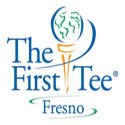
“With the monarch butterfly’s western population in peril, we’re encouraging California producers to make simple tweaks on their farms that can go a long way for this iconic species,” said Carlos Suarez, state conservationist with USDA’s Natural Resources Conservation Service (NRCS) in California. “NRCS offers more than three dozen conservation practices that enable producers to help monarchs and other pollinators as well as benefit their agricultural operations.”
The overwintering monarch butterfly’s western population declined by 85 percent between 2017 and 2018, according to counts released by the Xerces Society for Invertebrate Conservation Nationwide, the species has seen population declines since the 1980s, in part because of the decrease in native plants like milkweed – the sole source of food for monarch caterpillars.
As monarch butterflies migrate, they must have the right plants in bloom along their migration route to fuel their flight. Producers – especially those along California’s coast and in the Central Valley and Sierra foothills – can play an important role in helping the species.
Through a variety of conservation practices, NRCS helps producers improve management of healthy stands of milkweed and high-value nectar plants and protect these stands from exposure to pesticides.
Planting native milkweeds is critically important to rebuild the western monarch population, but scientists at the Xerces Society recommend that milkweed not be planted within five miles of overwintering sites near the coast. It did not typically occur there and may prevent returning monarchs from going into their winter clusters.
NRCS also recommends California producers to establish plants that bloom in the fall, as monarchs head to coastal overwintering sites, and in the late winter and very early spring, as the winter clusters of monarchs break up. These fall-blooming species include goldenrod and asters, and late-winter species include coyote brush, manzanitas, and native California lilac and other Ceanothus species.
“With this abrupt one-year decline, the western monarch population is now less than one percent of what it was in the 1980s.” said Mace Vaughan of the Xerces Society for Invertebrate Conservation. “To give monarchs the best chance of recovery, we need to get nectar plants into the ground to sustain the remaining butterflies, and milkweeds to feed their caterpillars.”
While many of the conservation practices that NRCS recommends may target improving grazing lands or reducing soil erosion, simple tweaks to restoration plant lists or timing of management practices can yield big benefits for monarchs.
NRCS helps producers cover part of the costs for adopting these practices through the Environmental Quality Incentives Program (EQIP) and other Farm Bill-funded programs. NRCS accepts applications for conservation programs on a continuous basis. Producers interested in assistance are encouraged to contact their local USDA Service Center.














































